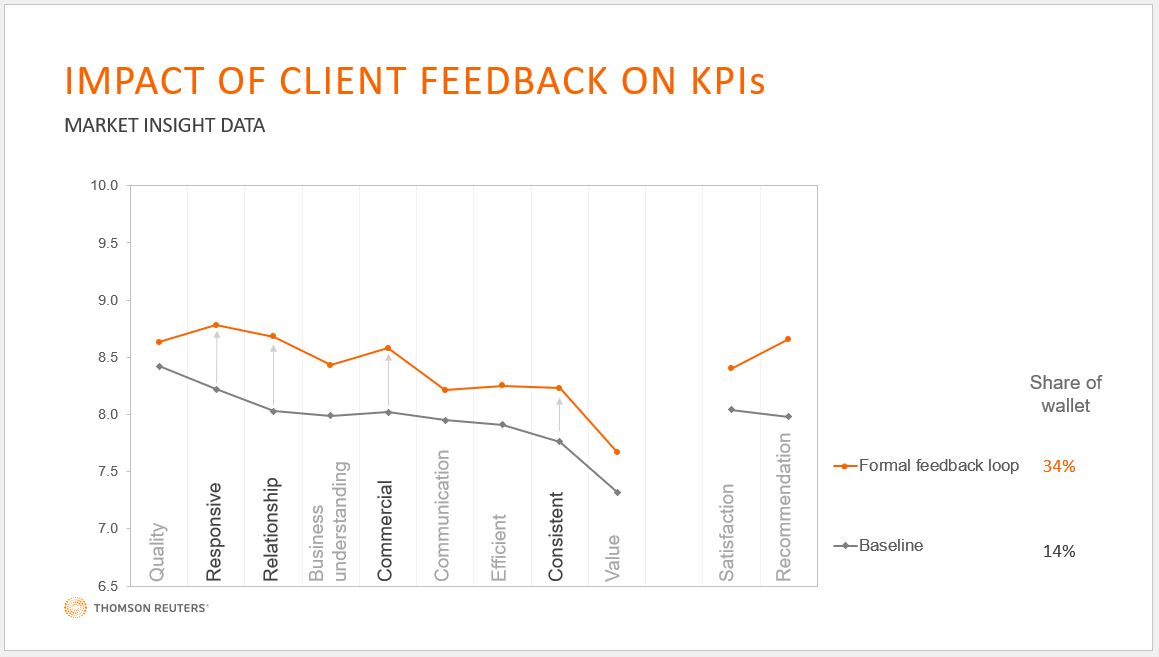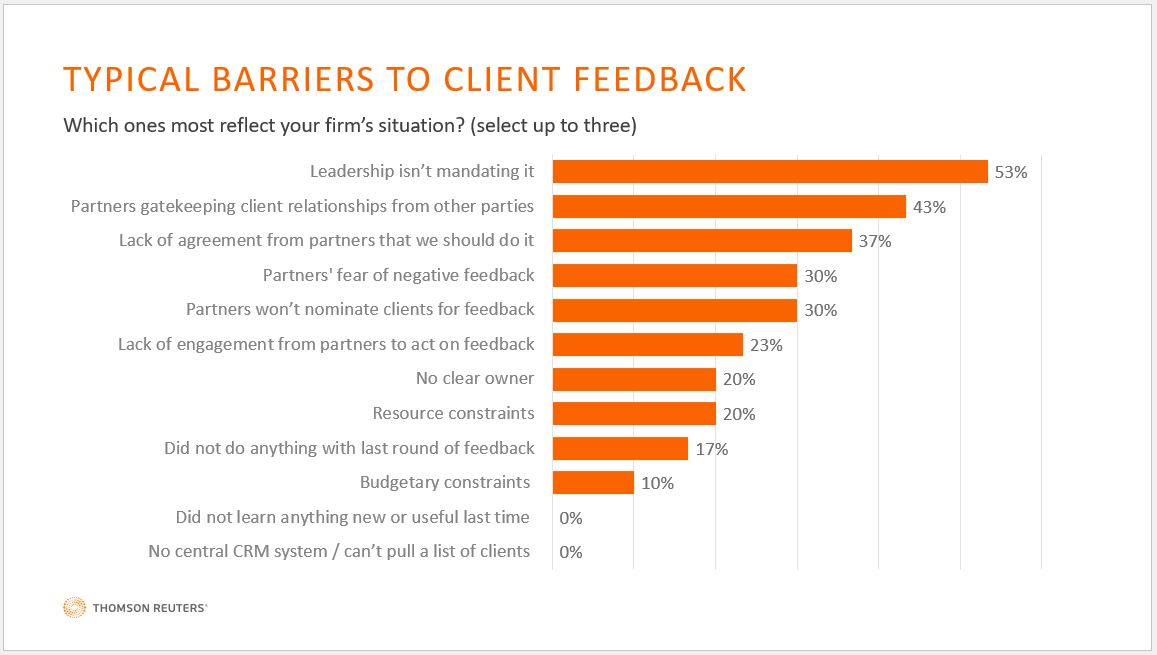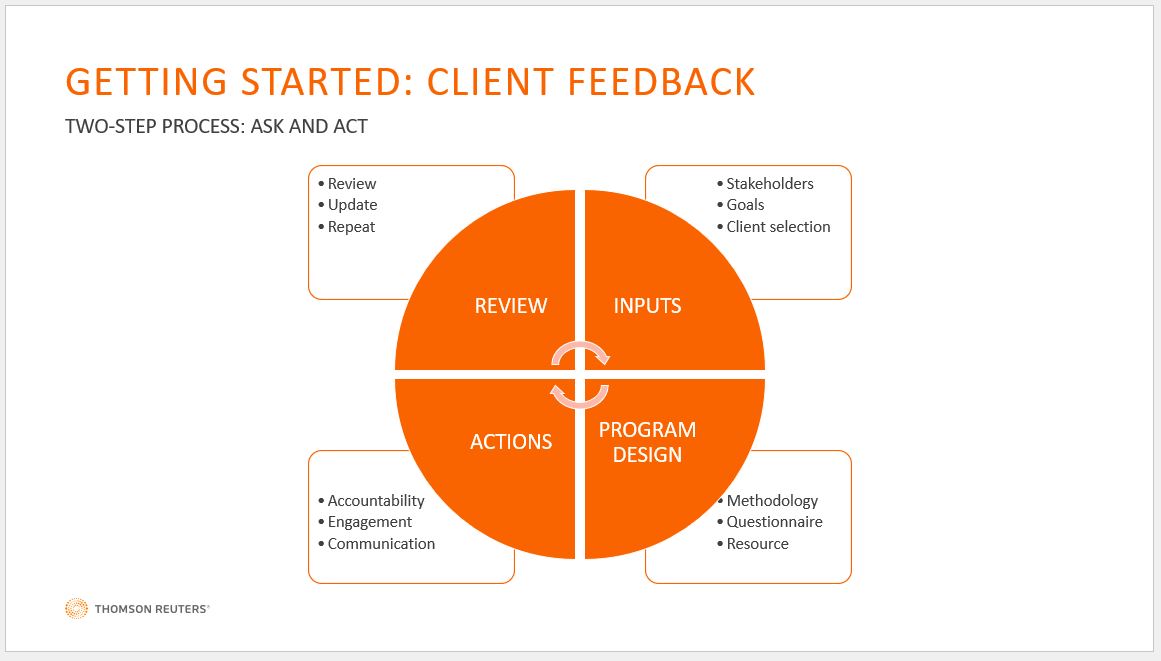Enacting formal client listening programs can make a difference in how law firms perform on key metrics and on increasing their share of clients' legal spend
Law firms that have a formal feedback loop in place with their clients are benefitting from a significantly higher performance on key metrics, including higher levels of client satisfaction and a bigger share of clients’ wallets. In fact, clients spend twice as much with those law firms that ask them for formal feedback than with those that don’t.

The potential growth that law firms could see with existing clients is huge, yet it is still a minority of clients that are invited to take part in a formal feedback program.
In our recent webinar series, I wanted to tackle this issue head-on by breaking down some of the barriers that firms are facing as they try to build a successful client listening program. I also wanted to look at how firms were setting themselves up for success.
Our research shows that client listening initiatives provide a unique opportunity for law firms to develop deeper, broader relationships with their client base and stand out quickly from the competition in their clients’ minds. The webinars not only offered attendees some new ideas and best practices, they potentially provided inspiration to those client-listening ambassadors within law firms who could use the insights to create or sharpen their own client listening plans.
Getting started
The webinars devoted some time to how law firms can begin to tackle the fundamentals of getting started, how to scale up a client listening program, and the importance of connecting client listening to firm strategy. Attendees also heard a lot about the ambitions that many law firms have for their client listening programs, as well as the challenges they face in bringing these aspirations to life. For example, we know the rationale and benefits for doing client listening far outweigh the trouble it takes to actually bring a program to life; so, why then are only 20% of clients being invited to share feedback formally with their outside law firms?
In fact, we put this question to the webinar audience to better understand the main challenges getting in the way of a firm’s client listening success. Not surprisingly, at the top of the list was the fact that leadership was not mandating the program.

Other factors cited at the top were partner-related obstacles: Partners won’t allow access to clients (second-most cited reason); and they aren’t supportive of the program (third-most cited). It’s clear that more work is needed to convince partners of the benefits client listening programs may have on growing their own practice. Of course, the success of initiatives like this begins with firm leadership — and they must own the responsibility for encouraging and supporting a program, too.
You can learn more about creating a top-level client feedback program here.
Client listening may be the single most important step in securing the long-term future of a law firm — without it firm leaders and partners can’t know for sure how their clients are experiencing the firm, their propensity to consider the firm for future work, or indeed, what their future legal needs may be.
Of course, client listening is a two-step process: Asking is just the first step; and acting on the information is the crucial second. In fact, one of our key messages on client listening is without the commitment to act on what you hear, you should not start asking.
Planning the program
This diagram below shows the four key stages that law firms should consider when planning a successful client listening program:

-
-
- First, the program should start with careful planning and thought as to what the right input, in terms of stakeholders and engagement, would be. Set clear goals to define the purpose of the research program, and choose the right clients to include.
- Then, these inputs will determine your program design, which includes determining which methodology is most appropriate for your firm’s needs, based on which clients your firm is researching, what you aim to learn, what you should be asking, and how you will resource the program in terms of skills and capacity.
- Our message is “Ask and Act”, so that makes the actions that are derived from the program’s results become as important (or more so) as asking for feedback in the first place. How will your firm be set up to work with the results? How will the results be shared around the firm? Who will be accountable for following up?
- Finally, a review stage requires that you check back periodically with clients to see how firm performance has improved based on clients’ feedback. With this information, firm leaders can assess how successful the program was in line with its goals.
-
There is much talk within law firms today about collaboration, cross-practice activity, and institutionalizing relationships with clients across the firm. Until firms and their leaders truly walk the journey of clients by listening and taking steps to engrain client listening in the firm culture and make it a part of how the firm does business, however, all this will remain just that — talk.







